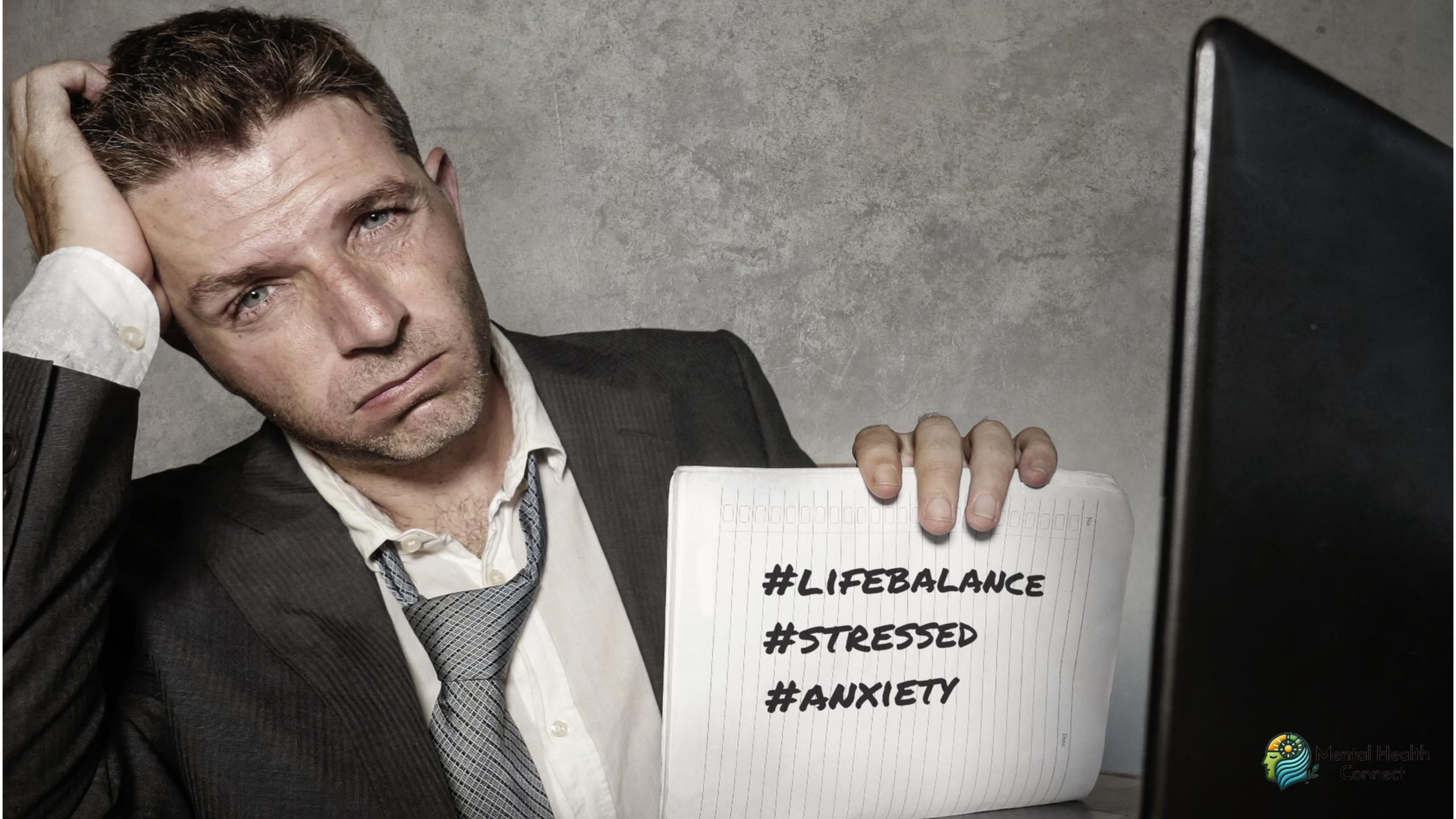How to Manage Work-Related Stress and Anxiety: Effective Strategies for Modern Professionals

In today’s fast-paced professional environment, work-related stress and anxiety have become increasingly common challenges. Whether you’re facing tight deadlines, managing difficult workplace relationships, or struggling with overwhelming workloads, the impact on both mental and physical health can be significant. Fortunately, there are practical, evidence-based strategies that can help you regain control and find balance.
Understanding Work-Related Stress and Anxiety

Work-related stress occurs when the demands of your job exceed your perceived ability to cope. While short-term stress can sometimes boost performance, chronic stress leads to burnout, decreased productivity, and health problems. Workplace anxiety often manifests as persistent worry about job performance, social interactions at work, or job security.
According to the American Institute of Stress, approximately 83% of US workers suffer from work-related stress, with 25% saying their job is the number one stressor in their lives. These statistics highlight the widespread nature of this issue and the importance of developing effective management strategies.
The Physical and Mental Impact

Untreated workplace stress and anxiety can lead to serious consequences:
· Physical symptoms: Headaches, digestive issues, sleep disturbances, weakened immune system, and increased risk of cardiovascular problems
· Mental health effects: Depression, burnout, diminished cognitive function, difficulty concentrating
· Behavioral changes: Increased irritability, social withdrawal, substance misuse as a coping mechanism
· Professional consequences: Reduced productivity, increased absenteeism, higher turnover rates
Effective Strategies for Managing Work-Related Stress and Anxiety

1. Set Clear Boundaries Between Work and Personal Life
In our hyper-connected world, the line between professional and personal time has blurred significantly. Establishing firm boundaries is essential:
· Define working hours: Clearly communicate when you are and aren’t available
· Create physical separation: Designate a specific workspace, especially when working from home
· Digital boundaries: Turn off work notifications after hours and consider using separate devices for work and personal use
· Transition rituals: Develop routines that help you mentally switch from work mode to personal time
Research published in the Journal of Occupational Health Psychology found that employees who established clear work-life boundaries reported significantly lower stress levels and higher job satisfaction.
2. Practice Mindfulness and Present-Moment Awareness
Mindfulness the practice of focusing on the present moment without judgment—has been shown to significantly reduce work-related stress and anxiety:
· Brief meditation sessions: Even 5-10 minutes daily can produce measurable benefits
· Mindful breathing: Try the 4-7-8 technique for mindful breathing: inhale for four counts, hold for seven, and exhale for eight.
· Body scanning: Systematically notice sensations throughout your body without trying to change them
· Mindful work transitions: Take a conscious minute between tasks to reset your attention
A study from the University of Massachusetts Medical School found that participants in an 8-week mindfulness program showed a 43% reduction in anxiety symptoms and reported feeling more in control at work.
3. Restructure Your Relationship with Work
How you think about your work significantly impacts your stress levels:
· Identify your values: Clarify what meaningful work looks like for you
· Focus on purpose: Connect daily tasks to larger goals or values
· Practice cognitive reframing: Challenge catastrophic thinking about work outcomes
· Celebrate small wins: Acknowledge progress rather than focusing solely on end results
4. Develop Healthy Physical Habits
Physical well-being directly influences your resilience to stress:
· Prioritize sleep: Make sleep a priority. Try to get seven to nine hours of good sleep every night.
· Exercise regularly: Even moderate activity like walking reduces stress hormones
· Nutrition matters: Minimize caffeine, alcohol, and sugar, which can exacerbate anxiety
· Stay hydrated: Dehydration can amplify feelings of anxiety and reduce cognitive performance
5. Build a Supportive Professional Network
Social connection is a powerful buffer against workplace stress:
· Find your allies: Cultivate relationships with supportive colleagues
· Seek mentorship: Connect with those who have navigated similar challenges
· Join professional groups: Industry associations or interest groups can provide perspective
· Consider peer coaching: Regular check-ins with a trusted peer can provide accountability and support
6. Implement Time Management and Organizational Strategies
Feeling overwhelmed often stems from poor time management or organizational systems:
· Priority matrix: Categorize tasks based on importance and urgency
· Time blocking: Schedule specific periods for different types of work
· The two-minute rule: Immediately complete tasks that take less than two minutes
· Strategic breaks: Use techniques like the Pomodoro method (Work for 25 minutes, then take a 5-minute break.)
· 7. Communicate Effectively About Workload and Expectations
Many workplace stressors can be addressed through clear communication:
· Regular check-ins: Discuss priorities and expectations with supervisors
· Learn to delegate: Identify tasks that can be shared or reassigned
· Negotiation skills: Practice discussing workload adjustments professionally
· Feedback loops: Establish regular opportunities to discuss what’s working and what isn’t
8. Consider Professional Support
Sometimes additional help is needed:
· Employee Assistance Programs (EAPs): Many employers offer free, confidential counseling
· Therapy options: Cognitive-behavioral therapy (CBT) has strong evidence for anxiety management
· Stress management workshops: Skill-building opportunities offered by many organizations
· Medical evaluation: In some cases, consulting with a healthcare provider is appropriate
Creating a Personalized Stress Management Plan
The most effective approach combines multiple strategies tailored to your specific situation:
1. Assess your stressors: Identify your specific triggers and patterns
2. Start small: Choose 1-2 strategies to implement initially
3. Track your progress: Note changes in your stress levels and overall wellbeing
4. Adjust as needed: Refine your approach based on what works for you
5. Build consistency: Develop stress management habits rather than one-time fixes
When Workplace Changes Are Needed

Sometimes, managing stress requires advocating for workplace changes:
· Flexible scheduling: Discuss options for adjusting work hours or location
· Workflow improvements: Suggest process changes that could reduce unnecessary stress
· Cultural initiatives: Advocate for wellness programs or stress-reduction policies
· Job restructuring: In some cases, discussing role modifications may be appropriate
The Long-Term Approach
Managing work-related stress isn’t a one-time fix but an ongoing practice:
· Regular reassessment: Workplace demands and personal capacity change over time
· Skill development: Continue building stress management capabilities
· Preventative mindset: Implement strategies before reaching crisis points
· Community building: Contribute to creating healthier workplace environments
Work-related stress and anxiety are significant challenges in modern professional life, but they’re not insurmountable. By implementing a combination of boundary-setting, mindfulness practices, physical health strategies, and communication skills, you can create a more sustainable relationship with your work.
Remember that managing workplace stress is not just about individual coping organizational factors play a crucial role. The most effective approach combines personal strategies with advocacy for healthier workplace cultures and practices.
By taking proactive steps to manage work-related stress, you’re investing not just in your professional success but in your overall quality of life and long-term wellbeing.
-
 How to Support Someone with OCDApril 17, 2025
How to Support Someone with OCDApril 17, 2025 -


Leave a Reply